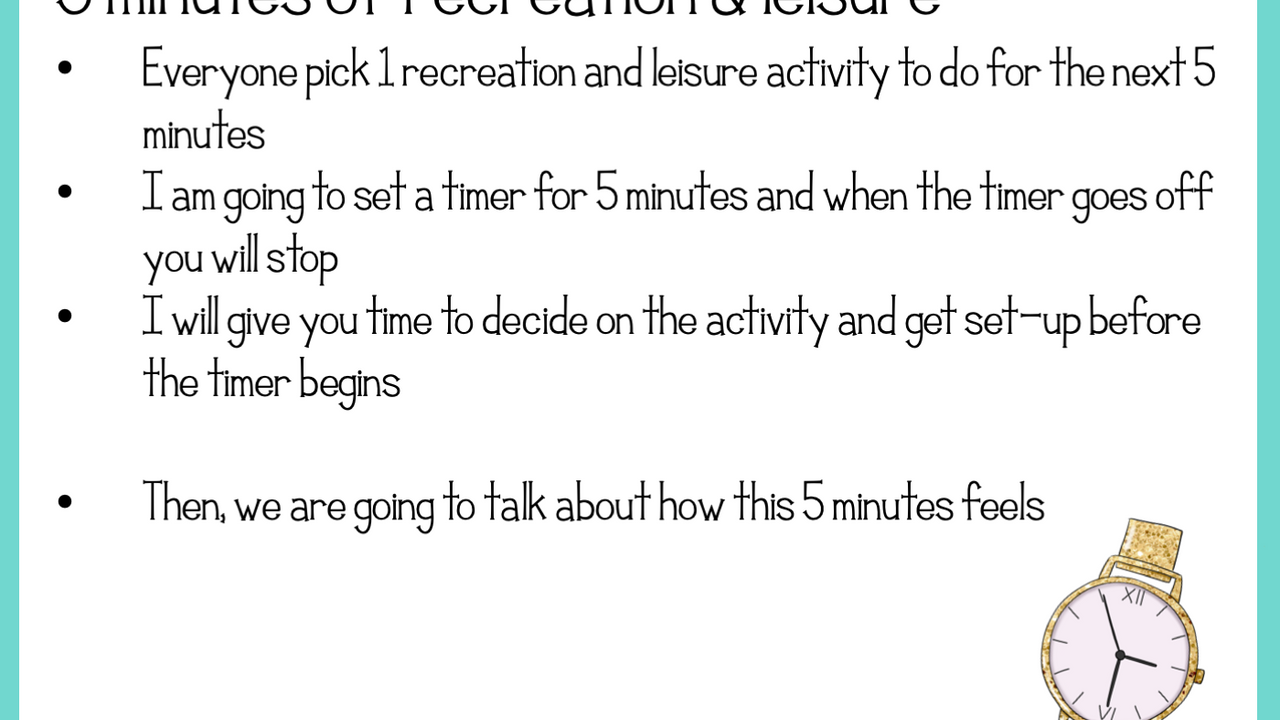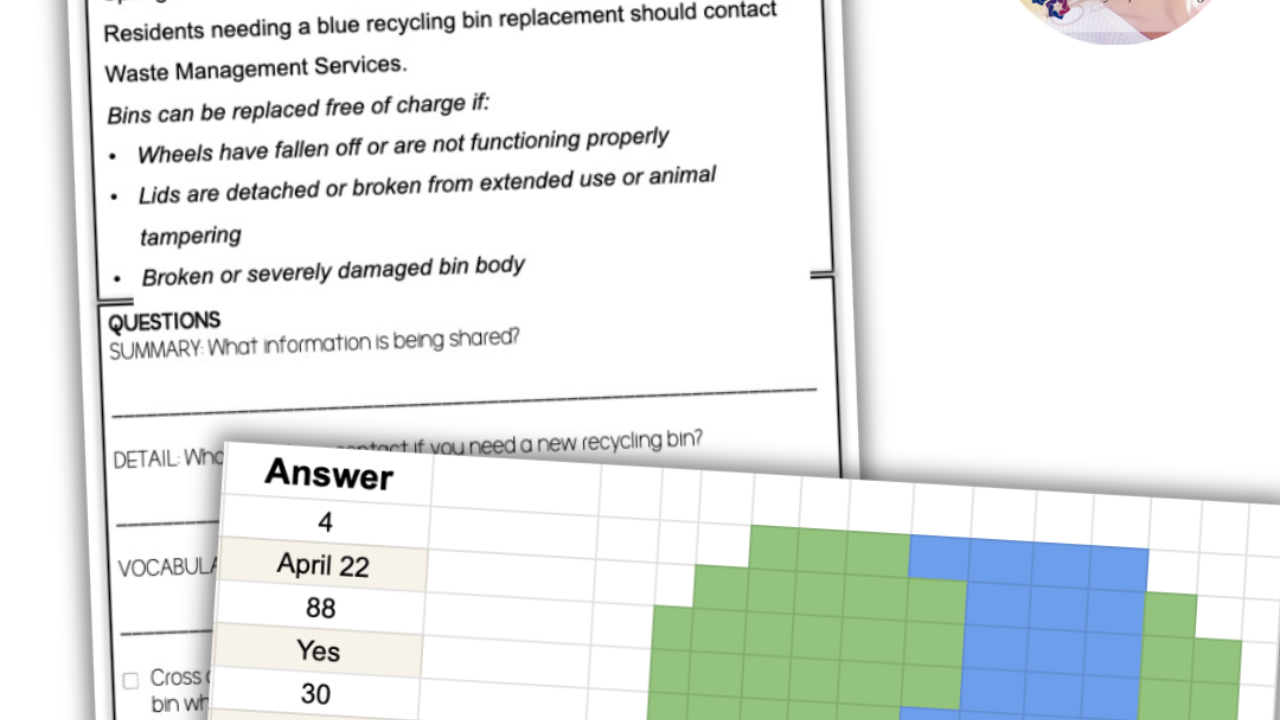Down Time is a Good Thing- How to Teach Recreation Leisure Skills
Sep 19, 2020
Downtime is where the important life skills are learned! Unstructured time is a good thing! Recreation and leisure skills are skills key for independence and functioning.
As special education teachers we are all aware of our students' needs for structure, consistency, and routine schedules. You know that students thrive when they know what to expect and are prepared. This is a concept our professors drill into us educators-to-be in college, am I right?
Let’s fast forward to transition age, 18-22 years old (or older), and parents and day program staff express that their young adults need to be able to occupy themselves without an adult constantly initiating, preparing, and executing a plan.
Consider this- students have more free time before and after school than they do in school. Day programs, as they are called in my region of the US, often don’t teach 50 minute structured lessons for the entirety of the day. Who is structuring that time? When it isn’t structured for our students, what do they do and is it functional long term for day program staff and caregivers?
The schedule likely has flexible transitions and periods of open recreation and leisure and the staff-to-participant ratios often mean that the staff are tending to other tasks and don’t have the capacity to lead activities and games every second for 5+ hours.
This free time, unstructured time, recreation leisure time- whatever you want to call it- is an opportunity to put into practice key life skills- advocacy, decision making, problem solving, time management, and communication.
A few years back I realized that when I had a task to complete, like counting receipts and change from an outing upon returning, and my students had a few minutes of free, unstructured time, they would often just sit in silence or turn to a staff member and start talking AT them (no, not WITH them but AT them).
I had a recreation/leisure/game table full of activities right in the classroom, I taught games and activities every Friday afternoon, I had puzzles and lego builds mere inches from some of my students, and yet they struggled with seeing this free time as an opportunity for some self-led recreation and leisure fun!
The downtime was unfulfilled and no, I wasn’t going to structure it for them, I had to teach them HOW to explore and engage in recreation/leisure on their own!
I spent the next few weeks explicitly teaching how to spend ‘free time.’ Yes, I taught them how to occupy their unstructured, down time with things they want and prefer to do!
-
Students experienced sitting for 5 minutes in silence, not doing anything, then compared that feeling to spending 5 minutes doing something they enjoyed
-
Created a list of different recreation leisure activity options and even divided them up into things they could do in class (use the iPad because we had internet) and what they could do on a long bus ride (where internet isn’t available)
-
Practiced picking an activity and only doing that for 10 minutes (yes, they were forced to play 1 thing for a set amount of time)
-
Identifying different ways to successfully stop and transition to the next activity by using the clock and visual timer and natural cues
The lesson focused on allowing my students to take advantage of fun during their day, and this naturally allowed them to use the life skills they had been learning for years- advocacy, decision making, problem solving, time management, and communication.
After seeing the success of students jumping at the opportunity to color, listen to music, and work on a puzzle, even for five minutes, gave me so much hope. I had hope that they could better occupy their time at home when their caregiver or parent had tend to something else; I had hope that my students could be better prepared for a day program because they were comfortable with a less structured timeline; I had hope that my students found happiness in activities that were likely reducing their anxiety and stress and bringing a smile to their face in the middle of the school day.
It's been many moons since I first did the lesson, but I can share that it worked for my group. My students slowly, but surely, found the right times and ways to engage in recreation leisure time throughout their day. From this success, I decided to share this resource to other teachers. I created the ‘How to Teach Recreation and Leisure Skills’ Lesson.
This resource includes the following:
•3-part Slide lesson presentation
-Use all in 1 lesson or spread over 3 different lessons
•List of recreation/leisure options
•Links to resources for timers
•Survey (paper and Google form) for parents/guardians/caregivers to complete about the recreation/leisure activities that the student engages in at home
I created an even more in-depth lesson HERE!
Through this lesson unit students will:
•Learn what recreation/leisure is
•When to engage in recreation/leisure activities
•What their recreation/leisure preferences are
•How to start, engage, stop, and clean up from recreation/leisure activities
•Reflect on how engaging in recreation/leisure activities makes them feel
•Complete a poster of their preferred recreation/leisure activities
Tip- Most of the time I sent my support staff to another room so that students didn’t even have the opportunity to turn to them for help or to talk to- this was the hardest part for some of them!
I write all of this to say that you should embrace a little down time, yes, EMBRACE IT!
Teach your students how to spend that down time, how to engage in recreation leisure activities they love, and know that when your students master this skill they truly are preparing for their future!


















